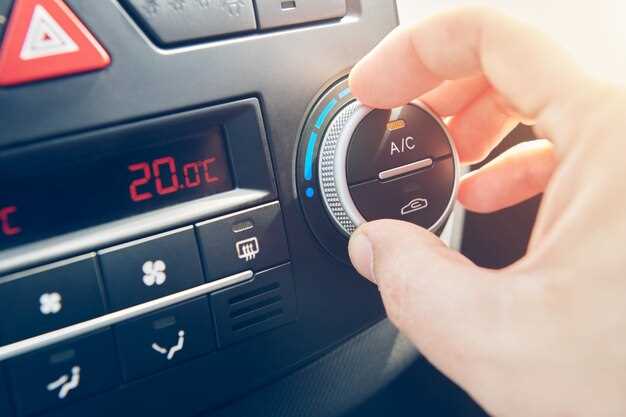When to Replace the Thermostat in Your Vehicle

The thermostat in your vehicle plays a crucial role in regulating the engine’s temperature and ensuring optimal performance. It acts as a gatekeeper for coolant flow, allowing the engine to reach its ideal temperature before circulating coolant to the radiator for cooling. When this component malfunctions, it can lead to significant issues, including overheating or inadequate engine cooling.
Identifying the signs that your thermostat may need replacing is essential for maintaining a healthy engine. Overheating is one of the most obvious indicators. If you notice the temperature gauge rising beyond the normal range, it may signal that the thermostat is stuck closed, preventing the coolant from circulating properly. Conversely, if your engine is running cold and the heater is not blowing warm air, this could indicate that the thermostat is stuck open, which can also lead to engine performance problems.
In addition to temperature irregularities, pay attention to any unusual sounds or leaks. Gurgling noises from the engine may suggest trapped air in the cooling system due to a malfunctioning thermostat. Coolant leaks around the thermostat housing can also indicate that it needs to be replaced. Recognizing these signs early can prevent further damage to your vehicle and ensure that your cooling system functions effectively.
Recognizing Overheating Issues and Their Symptoms

One of the most critical functions of your vehicle’s engine is maintaining an optimal temperature. When the engine runs too hot, it can lead to severe damage. Recognizing overheating issues early is essential for avoiding costly repairs. Here are some common symptoms to watch for:
Temperature Gauge Reading: Keep an eye on the temperature gauge on your dashboard. If it constantly moves into the red zone, this is a clear sign that your engine is overheating. Regular checks can help you catch issues before they escalate.
Coolant Warning Light: Many modern vehicles are equipped with a coolant temperature warning light. If this indicator lights up while driving, it suggests that the cooling system is underperforming and the engine may be overheating. Address this alert promptly to prevent damage.
Leaking Coolant: If you notice any fluid under your vehicle, it could be coolant leaking from the system. This can indicate a faulty thermostat or a more significant issue with your cooling system. Always check for leaks and ensure your coolant levels are adequate.
Heater Performance: A malfunctioning thermostat can cause the engine to overheat, leading to inconsistent heater performance. If you experience poor heating inside the cabin, it may be a symptom of a failing thermostat or cooling system issue.
Steam from the Engine: Visible steam escaping from under the hood is an urgent sign that your engine is overheating. This may indicate that the coolant is boiling, warranting immediate attention to prevent further damage.
Engine Noises: Unusual noises, such as knocking or pinging sounds, can occur when the engine is overheated. These sounds indicate internal stress and possible damage, highlighting the need to inspect the cooling system promptly.
In summary, recognizing these symptoms early can save your vehicle from severe damage. If you experience any of these symptoms, it is crucial to address the cooling system issues immediately to maintain engine health.
Understanding Coolant Leaks and Their Impact on Performance

Coolant leaks can significantly compromise your vehicle’s performance, as they disrupt the critical cooling system responsible for regulating engine temperature. When coolant escapes from the system, the engine may overheat, leading to potential damage and costly repairs.
A common source of leaks includes worn or damaged hoses, faulty radiator components, or a malfunctioning thermostat. As the coolant level decreases, the engine struggles to maintain optimal operating temperatures, resulting in reduced efficiency and increased wear on engine parts.
Detecting a coolant leak early is crucial. Look for signs such as puddles of coolant under your vehicle, low coolant levels in the reservoir, or an unusual rise in engine temperature. Regularly checking coolant levels and inspecting hoses can help identify leaks before they lead to significant performance issues.
If a coolant leak goes unnoticed, the consequences can be severe. Overheating engines can suffer from warped heads, damaged gaskets, or even complete engine failure. Addressing coolant leaks promptly ensures your cooling system functions effectively, maintaining the performance and longevity of your vehicle.
In conclusion, understanding the implications of coolant leaks is vital. Regular maintenance and vigilance can prevent minor issues from escalating, keeping your engine cool and performing at its best.
Evaluating Temperature Gauge Behavior and Its Significance
The temperature gauge in your vehicle plays a crucial role in monitoring the engine’s operating conditions. Its behavior can provide significant insights into the health of your thermostat and overall cooling system. When the gauge consistently indicates a normal operating temperature, it suggests that the thermostat is functioning properly, allowing the engine to heat up and cool down as needed.
However, fluctuations in the temperature reading can be a warning sign. If the gauge tends to rise unexpectedly into the overheating range, it may indicate a failing thermostat that is stuck in a closed position, preventing coolant flow. Conversely, if the gauge remains excessively low, it could signal that the thermostat is stuck open, preventing the engine from reaching optimal operating temperature.
Observation of the temperature gauge during various driving conditions is essential. Sudden spikes or erratic movements may indicate issues with the thermostat, which can lead to serious engine problems if not addressed. Additionally, paying attention to how quickly the gauge responds to temperature changes can help in evaluating the thermostat’s effectiveness. A slow response may also suggest a malfunction.
By closely monitoring the temperature gauge, vehicle owners can make informed decisions about when it might be time to replace their thermostat. Regular checks and understanding gauge behavior can prevent potential overheating, ensuring the longevity and reliability of the engine.

